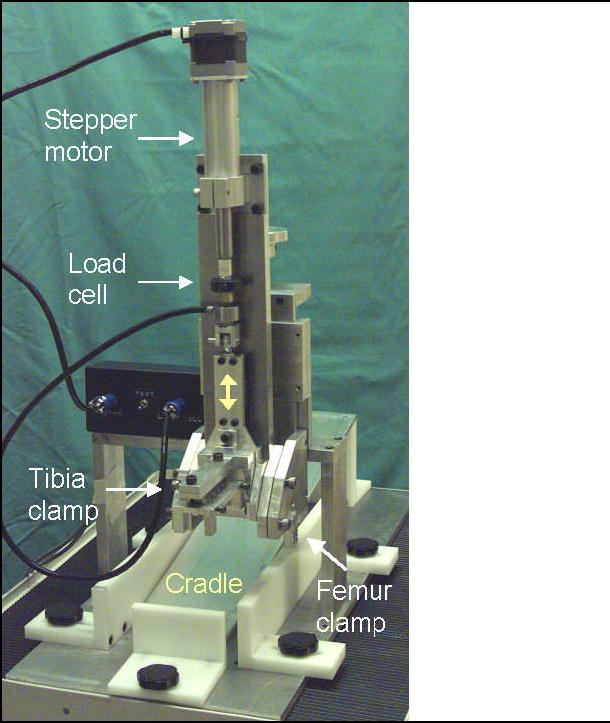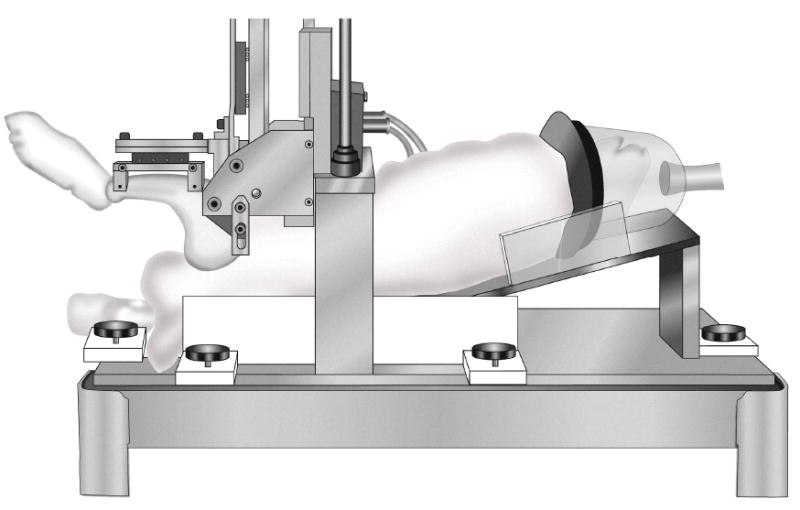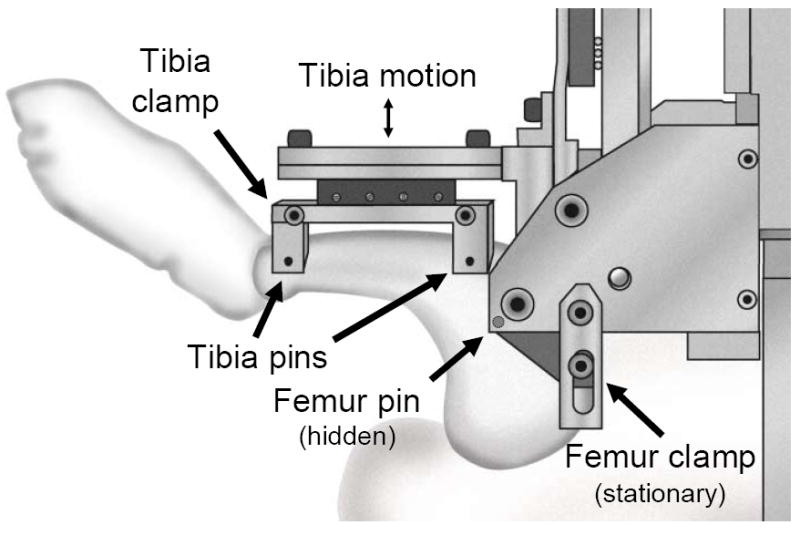Figure 2.



Rabbit knee testing device – a) overview, b) rabbit in place, and c) close-up of rabbit leg in testing device. This testing device measures translational stiffness in rabbit knees, replicating the clinical anterior drawer test. The femur is held vertically, and is attached to a stationary femur clamp through the femur pin. The tibia is attached to a moveable tibia clamp through the two tibia pins, with the knee flexion angle set at 90° (shown) or 135°. The tibia clamp, and the tibia, are moved anteriorly by a stepper motor, then returned to the home position, while force and displacement are recorded.
